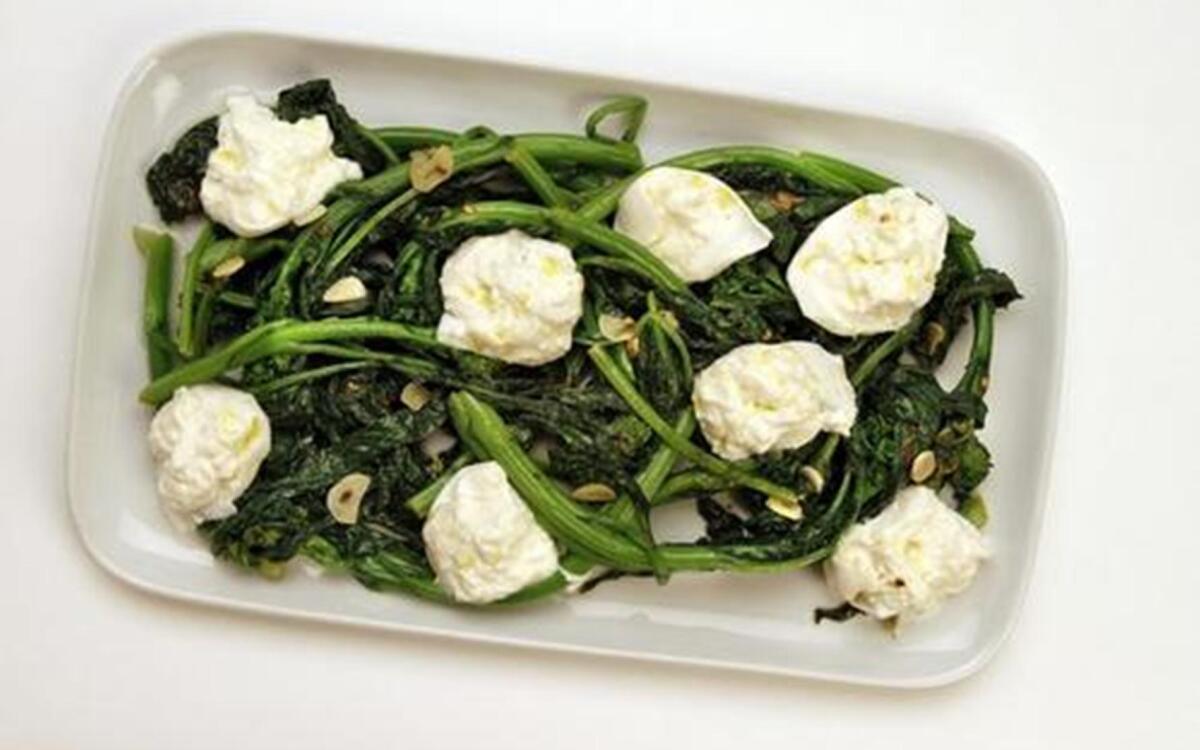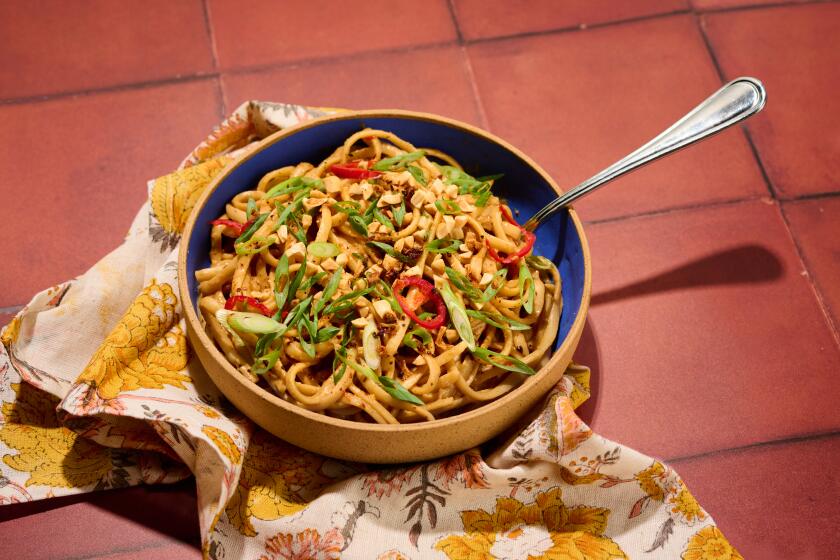Tofu with kimchi (Dubu kimchi)

The fact that we have a word in Korean, “ anju,” specifically for types of food that one eats with alcohol, should give a good indication of how much Koreans love to drink. The drink of choice can be mekju (beer) or makgeolli (a cloudy, unrefined rice wine), but it’s usually soju, a clear distilled alcohol, traditionally made from rice and most often compared to vodka.
I’m not sure which came first, the drinking or the snacking, but Koreans never drink without having something as an accompaniment. Be it peanuts, dried squid or flattened dried fish (what my siblings and I affectionately called “fish jerky”), something has to be eaten with one’s alcohol.
Anju isn’t just limited to dried fish and peanuts. It has developed into a wide array of menu options. Modern Korean drinking establishments may feature dishes as varied as fried chicken and nakji bokkeum (slices of tender octopus cooked in a sauce spiced with fiery gochujang and plenty of garlic). Some Korean bars and nightclubs (even those in Los Angeles’ Koreatown) require patrons to buy platters of anju with their drinks.
Anju comes in many shapes and flavors. Platters of fresh fruit go well with sweet fruit wines or the more contemporary soju cocktails. Salty chips, beef jerky, dubu kimchi (tofu and kimchi), spicy raw crab ( gyejang) or ddeokbokki (spicy rice cake sticks) are good with beer. Some people like any kind of flat cakes ( jeon or buchingae) or steamed pig’s feet ( jokbal) with their soju.
Alcohol was distilled for medicinal purposes, but it also was used as a way to create stronger social bonds. When guests visited someone’s home, it was customary to offer some homemade brew and some anju.
Among the beneficiaries of such Korean hospitality were the traveling folk musicians and farmers’ bands, who would go from village to village providing entertainment for food and a place to sleep.
My father remembers summers in the village where he grew up. Everyone would pool together enough money to buy a cow or a pig for a big communal roast. The innards would be saved to serve as anju for the roving folk musicians.
Even in modern society, drinking with Koreans requires a certain type of etiquette and quite a bit of endurance. Friendships and business deals are started or even solidified over drinks.
Here are some simple rules to follow when drinking with Koreans.
* First and foremost, never pour your own drink. Someone will always pour your beverage for you and you must pour for others. In general, it’s the youngest or the lowest-ranking member of the group who must be diligent in making sure that everyone’s glasses are not empty.
* Also, turn away when drinking in front of someone older or of higher ranking than you. It’s considered rude to drink brazenly in front of elders or someone higher on the corporate ladder.
* There is also the unwritten rule of “ o-cha,” which means five rounds of drinking or drinking in five different locations. This is where endurance comes in. Because it’s considered rude to refuse a drink when someone older than you offers it, it’s best to pace oneself.
That’s when the anju comes in handy.
Round one ( il-cha) starts with dinner and usually soju. Round two ( i-cha) may be at a bar for some anju, like fried chicken, and some beer or whisky. Round three ( sam-cha) is usually just another bar for more beer or soju. Round four ( sa-cha) is usually at a noraebang (private karaoke “singing” room). Round five ( o-cha) wraps up the evening at a nightclub or disco for a few more libations and anju with some dancing, for those who are still standing.
Koreans believe that eating something spicy and/or salty, or both, helps absorb some of the alcohol. I’m not sure if that’s the case, but drinking on an empty stomach is never a good idea, especially if you’ve jumped on the Korean o-cha train.
Once my husband and I took a trip to Jeju-do (South Korea’s southernmost island) with my mom’s godmother and her friend -- two 5-foot-nothing Koreangrandmothers with the stamina of the Energizer bunny.
After a day of hiking up volcanoes and exploring the rocky coasts of the island, we settled in for what I thought would be a quiet evening. From their huge old-lady purses, Godmother and her friend pulled out cold cans of beer, dried anchovies ( myeolchi) and little containers of gochujang (Korean chile paste) for dipping. I wouldn’t have been surprised if they had pulled out an entire mini-fridge.
Godmother soundly kicked our butts on Go-Stop (a Korean card game, also known as hwato). Then, she broke out in such a good rendition of “Johnny Guitar” that I almost forgot that she didn’t speak a lick of English. Such was the magic of just a little bit of Korean beer and some anju.
Place the block of tofu into a medium pot. Add enough water to cover and add a teaspoon of salt. Bring to a boil and cook until the tofu is hot all the way through, about 5 to 7 minutes. Remove from heat and set aside, leaving the tofu in the hot water.
In the meantime, heat the olive oil in a frying pan over medium heat. Add the garlic and onion and saute, stirring frequently, until just lightly browned, 3 to 4 minutes. Stir in the pork and chile paste and continue cooking until the pork is cooked through, 3 to 5 minutes. Stir in the kimchi, sesame oil, soy sauce and sugar and cook until the kimchi is softened and wilted, 4 to 5 minutes. Remove from heat.
Drain the tofu and cut into slices. Arrange the slices on the outer rim of a large plate. Pile the cooked kimchi in the middle. Drizzle over the toasted sesame oil. Sprinkle with chopped green onions and a generous amount of toasted sesame seeds.
Serve immediately, nice and warm, as an accompaniment to soju or beer, or as a banchan (side dish) with rice.
Get our Cooking newsletter.
Your roundup of inspiring recipes and kitchen tricks.
You may occasionally receive promotional content from the Los Angeles Times.















